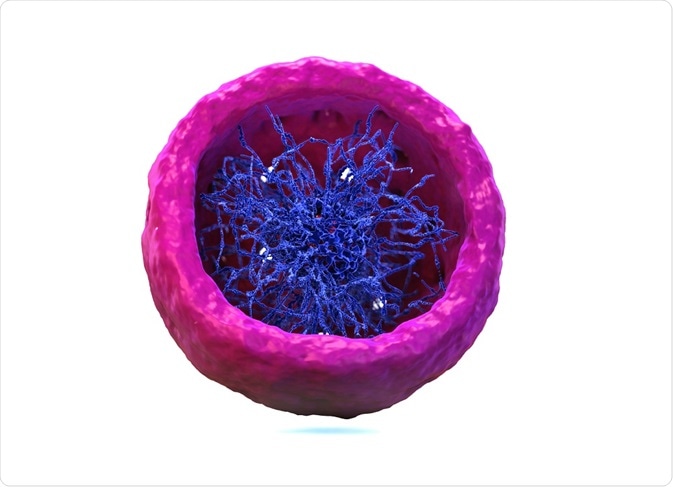Single-Nucleus RNA Sequencing (sNuc-seq) Applications
In earlier studies investigating RNA or DNA, all the cells of a population were pooled together to collect information. However, the diversity and complexity of various cell types are becoming increasingly clear. Single nucleus RNA sequencing techniques have been developed to sequence the RNA present in single cells.
 urfin | Shutterstock
urfin | Shutterstock
Advantages of single-nucleus RNA sequencing
RNA sequencing requires preparing single cell suspensions from fresh tissue, which is very difficult in tissues that do not dissociate easily. Using harsh enzymatic dissociation methods further destroys the integrity of neurons and their RNA. Thus, the data can be biased for samples that dissociate easily and cannot be performed on patients that suffer neurodegenerative disorders.
For these reasons, single nucleus RNA sequencing was developed. This method can be performed on frozen, fresh or lightly fixed samples. Even minute quantities of samples from tissues that are difficult to dissociate can be used for this technique. It helps to detect rare cell populations and define signatures of different cell types.
Challenges of single-nucleus RNA sequencing
This technique involves sorting the nuclei using Fluorescence Activated Cell Sorting (FACS). Hence, it is difficult to scale this method to include tens of thousands of nuclei from brain tissue, or to perform the technique on a large number of tumor biopsies from a patient.
To counter these drawbacks, several modifications to single nuclei RNA sequencing have been developed. Also, this method excludes the RNA from the cytoplasm.
What are the Applications of Single-Nucleus RNA Sequencing?
Sequencing RNA from tissue without massive dissociation
It is possible to rapidly and easily dissociate nuclei from tissues that have been either lightly fixed or frozen without excessive processing. This allows acquisition of the transcriptome without great disruption to the cells. This makes it convenient to collect genomic information from tissues from which it is difficult to separate single cells.
The transcriptional information extracted from single nuclei may be similar to the information extracted from single cells, but the representation of RNA and pre-mRNA from nuclei is greater.
DroNc-sequencing
DroNc-sequencing is a modification of single nuclei RNA sequencing and combines the advantages of single nuclei RNA sequencing and droplet microfluidics. This method has helped to assess thousands of nuclei at low cost and with massive throughput. This method was developed as single nuclei have smaller and lower amounts of RNA compared to whole cells.
In DroNc-sequencing, the single cells and DNA barcoded beads are encapsulated together in droplets which were generated using microfluidics. This accelerates expression profiling and also reduces cost. Using this method, the researchers could identify unique and high-quality expression profiles associated with neurons, glial cells, and other cell types in the brain.
Div-sequencing
Div-seq is another modification to the single nuclei sequencing method. This method provides an improvement over the nuclear sequencing technique. Here, 5-ethynyl-2’-deoxyuridine (EdU) is incorporated into the labeling which is further used to identify cells that are in different stages of division. This helps to identify different types of cells in different stages of the cell cycle.
The incorporation of EdU helps to identify different cell types in a population of cells and also rare populations while utilizing fluorescence activated cell sorting methods. The procedure involves labeling the cells with EdU, dissecting and fixing them before isolation into single nuclei.
These individual nuclei can then be tagged with fluorescent markers and sorted using FACS. After this, Smart-seq2 protocol is used to perform the cDNA analysis and then a cDNA library is constructed.
Sources
- www.illumina.com/…/div-seq.html
- weitzlab.seas.harvard.edu/files/weitzlab/files/2017_biorxiv_habib.pdf
- http://science.sciencemag.org/content/353/6302/925/tab-pdf
Further Reading
- All RNA Sequencing Content
- 16S rRNA Sequencing
- Single-Nucleus RNA Sequencing (sNuc-seq) Protocol
Last Updated: Apr 3, 2019

Written by
Dr. Surat P
Dr. Surat graduated with a Ph.D. in Cell Biology and Mechanobiology from the Tata Institute of Fundamental Research (Mumbai, India) in 2016. Prior to her Ph.D., Surat studied for a Bachelor of Science (B.Sc.) degree in Zoology, during which she was the recipient of anIndian Academy of SciencesSummer Fellowship to study the proteins involved in AIDs. She produces feature articles on a wide range of topics, such as medical ethics, data manipulation, pseudoscience and superstition, education, and human evolution. She is passionate about science communication and writes articles covering all areas of the life sciences.
Source: Read Full Article
